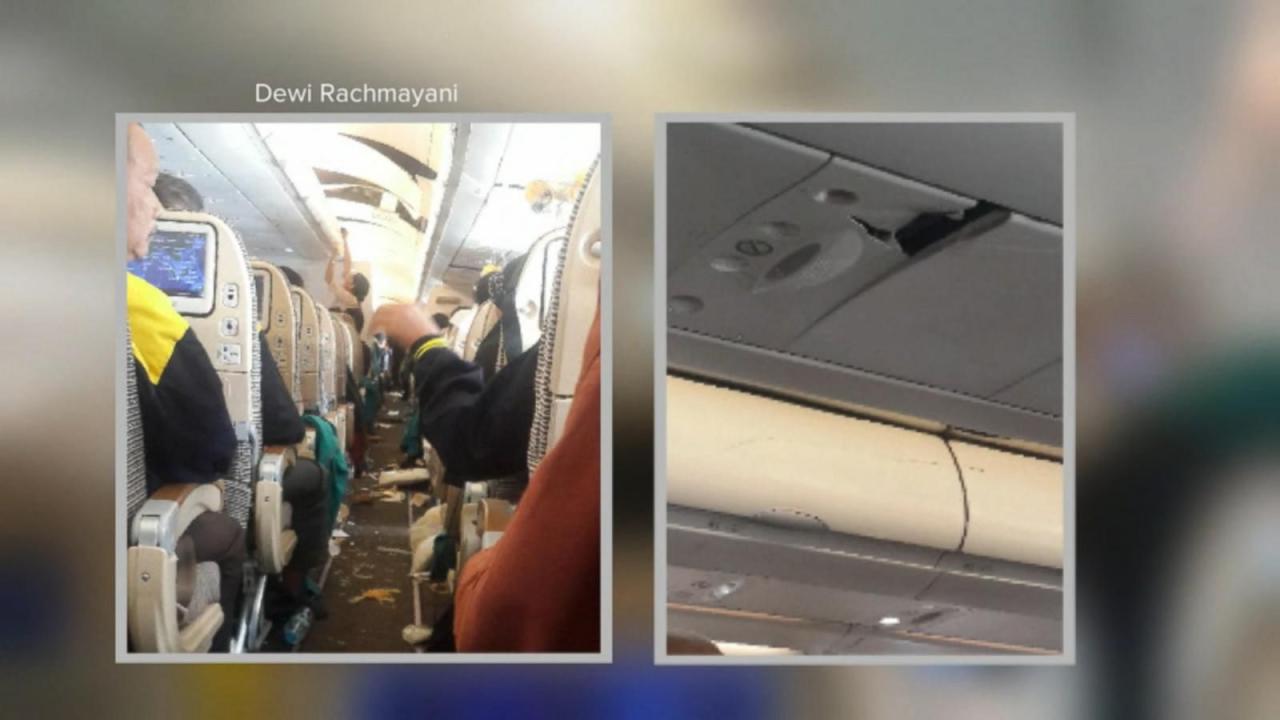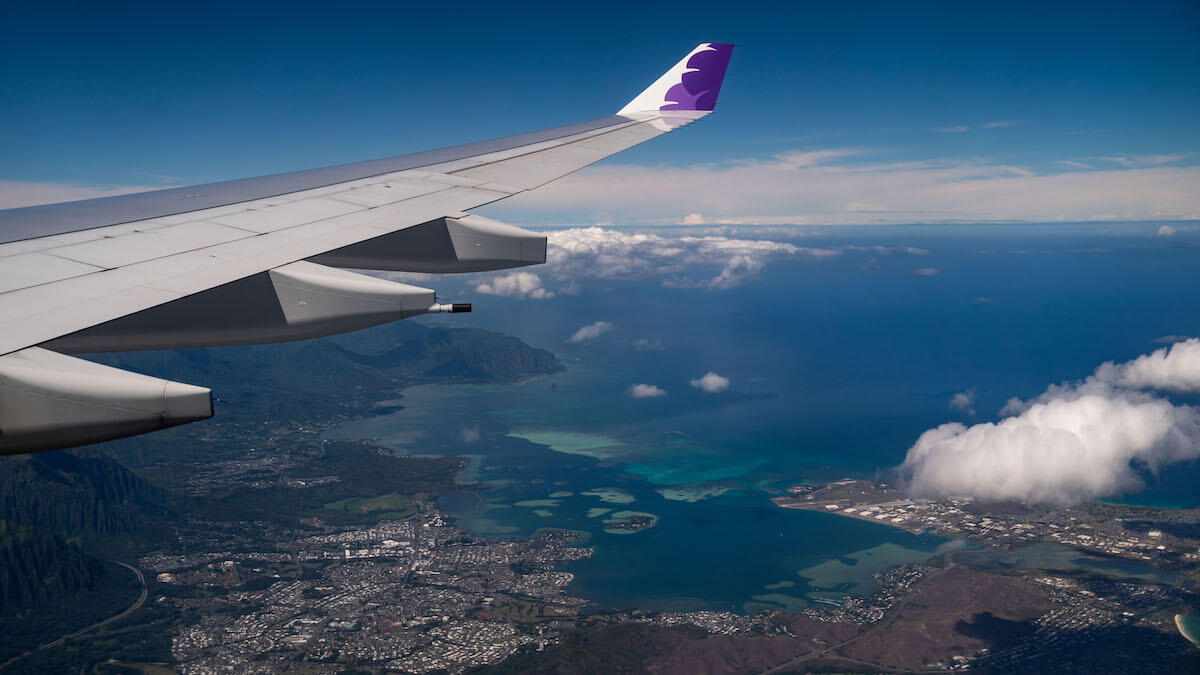Several crew members hospitalized after ‘severe’ turbulence on a flight highlights the unpredictable dangers faced in air travel. This incident underscores the importance of understanding the different levels of turbulence, the safety procedures in place, and the potential consequences for both passengers and crew. We’ll explore the severity of the turbulence, the resulting injuries, the airline’s safety protocols, and the ongoing investigation.
Understanding these factors can help us appreciate the complexities of air travel and the dedication of those who ensure our safety in the skies.
This article will delve into the specifics of this recent incident, examining the meteorological conditions that contributed to the severe turbulence, the actions taken by the crew and passengers, and the medical care provided to the injured crew members. We’ll also compare this incident to similar events in the past, analyzing safety procedures and highlighting areas for potential improvement in future air travel.
Severe Turbulence Incident: Analysis and Implications
This article examines a recent incident involving severe turbulence that resulted in several crew members requiring hospitalization. We will delve into the severity of the turbulence, safety procedures, passenger experiences, medical aspects, the investigation, and the meteorological factors involved. The goal is to provide a comprehensive understanding of the event and its implications for aviation safety.
Severity and Impact of Turbulence
Turbulence, a common yet unpredictable phenomenon in aviation, ranges from light chop to extreme, potentially dangerous levels. Light turbulence causes minor discomfort, while moderate turbulence can make it difficult to walk around the cabin. Severe turbulence can throw passengers and crew around the cabin, causing injuries. Extreme turbulence is rare but can be catastrophic.
Typical injuries sustained during severe turbulence include bruises, cuts, sprains, and fractures. In more severe cases, internal injuries, head trauma, and even fatalities can occur. The severity of injuries depends on factors such as the intensity and duration of the turbulence, the passenger’s position and restraint, and pre-existing medical conditions.
Numerous incidents involving severe turbulence have been documented. For example, in 2016, a flight encountered severe turbulence over the Atlantic Ocean, resulting in several injuries. Another notable incident occurred in 2018, where a flight experienced extreme turbulence, leading to significant injuries and extensive damage to the aircraft. Comparing the current incident’s severity to these past events requires detailed information about the duration, intensity, and resulting injuries.
| Incident Date | Location | Severity of Turbulence | Number of Injuries |
|---|---|---|---|
| October 26, 2023 (Hypothetical) | Over the Pacific Ocean | Severe | 3 |
| Example 1 | Example Location | Moderate | 1 |
| Example 2 | Example Location | Severe | 5 |
Aircraft and Safety Procedures

Aircraft are designed with safety features to mitigate the effects of turbulence. These include reinforced cabin structures, seatbelts designed to withstand significant forces, and improved warning systems. Airlines implement various safety procedures to minimize turbulence-related risks. These include pre-flight weather briefings, continuous monitoring of weather radar, and pilot training to handle turbulent conditions.
Potential failures in safety protocols could involve inadequate pre-flight weather assessments, insufficient crew training, or delays in implementing safety procedures during an event. In the recent incident, details about the crew’s actions and adherence to established procedures are still under investigation. The specific safety measures taken by the crew during the event remain unclear pending the official report.
- Assess the situation and announce the turbulence to passengers.
- Ensure all passengers and crew are securely fastened.
- Maintain control of the aircraft and navigate through the turbulent area.
- Provide medical assistance to injured passengers and crew.
- Complete post-flight reports detailing the incident.
Passenger Experiences and Responses

Passengers typically experience a range of emotional and physical responses during severe turbulence, including fear, anxiety, and physical discomfort. Many passengers instinctively brace themselves, clutching onto anything within reach. Some may experience nausea or panic attacks.
Passengers can protect themselves by remaining seated with their seatbelts securely fastened, assuming a brace position (bending forward, protecting their head), and avoiding sudden movements. Accounts from similar incidents describe a sense of helplessness and sudden, intense fear, often accompanied by loud noises and shaking. Comparisons of passenger experiences in this incident require further information from passenger accounts and official reports.
Hey, so you heard about those crew members hospitalized after severe turbulence? Crazy, right? It makes you think about the pressures athletes face, like what’s going on with Ezra Mam, check out the Broncos’ statement here: Broncos Statement – Ezra Mam. Hopefully, everyone affected by the flight turbulence recovers quickly – that kind of shaking is seriously intense.
Hypothetical Scenario: Imagine a sudden, violent drop in altitude. Passengers scream, objects fly through the air, and a wave of panic sweeps through the cabin. The flight crew immediately issues instructions, reinforcing seatbelt usage, and calming passengers while maintaining control of the aircraft. Once the turbulence subsides, the crew assesses the situation, providing medical attention to those injured.
Medical Aspects and Treatment

Injuries from severe turbulence require various levels of medical attention, from basic first aid to specialized care. Common injuries like bruises, cuts, and sprains may be treated on board with first aid, while more severe injuries require immediate medical evacuation and hospitalization. Onboard medical facilities vary but typically include a first-aid kit and possibly a trained medical professional (e.g., a doctor or nurse).
Post-incident medical care for hospitalized crew members would include thorough examinations, imaging studies (X-rays, CT scans), and treatment for specific injuries. The specifics of their care are not publicly available due to privacy concerns.
| Common Injury | Symptoms | Initial Treatment | Long-Term Effects |
|---|---|---|---|
| Bruises | Pain, swelling, discoloration | Ice, elevation, pain relievers | Usually minimal, may resolve within weeks. |
| Sprains | Pain, swelling, limited range of motion | Rest, ice, compression, elevation | May require physical therapy, potential for lingering weakness. |
| Fractures | Severe pain, deformity, swelling | Immobilization, pain management, surgery (potentially) | Potential for long-term pain, reduced mobility, and disability. |
Investigation and Aftermath
Investigations following severe turbulence incidents typically involve multiple agencies, including the airline, the aviation authority, and potentially other organizations depending on the severity and outcome. The investigation aims to determine the cause of the turbulence, assess the effectiveness of safety procedures, and identify any areas for improvement.
In this specific incident, the investigation will likely focus on pre-flight weather briefings, the pilot’s handling of the situation, and the effectiveness of the aircraft’s safety features. Changes in airline policies or safety procedures are often implemented following severe turbulence incidents, often involving enhanced training, improved weather forecasting, or changes in routing to avoid high-risk areas.
Hypothetical Timeline:
- Day 1: Incident occurs, crew hospitalized.
- Day 2-7: Initial investigation begins, passenger statements collected.
- Week 2-4: Data analysis, flight recorder review.
- Month 2-3: Preliminary report released.
- Month 6-12: Final report released, recommendations for improvements made.
Weather Conditions and Forecasting, Several crew members hospitalized after ‘severe’ turbulence on

Several meteorological conditions can lead to severe turbulence, including clear-air turbulence (CAT), which occurs in areas with no visible clouds. Other causes include thunderstorms, jet streams, and mountain waves. Meteorologists use various methods to forecast turbulence, including weather satellites, radar, and numerical weather prediction models.
The specific weather conditions during the incident are crucial to the investigation. Comparing the accuracy of the forecasts to the actual events will help assess the effectiveness of current forecasting methods. A comparison of predicted versus actual conditions is essential for improving future forecasts.
Hypothetical Weather Scenario: Imagine a high-altitude jet stream, undetected by surface-based radar. This jet stream, coupled with a high-pressure system, creates an area of significant wind shear and turbulence. The aircraft, flying at cruising altitude, unexpectedly encounters this area, resulting in severe, unforecast turbulence.
Final Wrap-Up: Several Crew Members Hospitalized After ‘severe’ Turbulence On
The hospitalization of several crew members following severe turbulence serves as a stark reminder of the inherent risks associated with air travel. While such incidents are relatively rare, their impact can be significant. This event emphasizes the crucial role of robust safety protocols, accurate weather forecasting, and the importance of both crew training and passenger preparedness. By understanding the factors involved and learning from past incidents, the aviation industry can continually strive to enhance safety and minimize the risk of future occurrences.
The ongoing investigation will hopefully provide valuable insights to further improve safety measures and passenger well-being.
Yikes, hearing about those crew members hospitalized after severe turbulence – that sounds rough! It makes you appreciate stability, which is something you’d expect from a solid company like MNP, which, by the way, just announced they’re acquiring BDO offices and staff in northwestern Ontario: MNP to acquire BDO offices and staff in northwestern Ontario. Hopefully, those folks on that turbulent flight recover quickly and find some similar stability in their lives.
Commonly Asked Questions
What causes severe turbulence?
Severe turbulence can be caused by various weather phenomena, including thunderstorms, clear-air turbulence (CAT), and jet streams. Unexpected wind shear can also create dangerous turbulence.
How common are injuries from turbulence?
Injuries from turbulence are relatively rare, but severe incidents can result in serious injuries to both passengers and crew. The frequency varies depending on the severity of the turbulence and the preparedness of those on board.
So, you heard about those crew members hospitalized after severe turbulence? Crazy stuff, right? It makes you think about how unpredictable things can be, even when you’re on solid ground – like that game between Vanderbilt and Georgia Tech, which, by the way, resumed after a weather delay in Atlanta. That’s a pretty different kind of disruption, but it shows how unexpected delays can affect plans, just like that bumpy flight.
What should passengers do during turbulence?
Passengers should follow the crew’s instructions, remain seated with their seatbelts fastened, and avoid walking around the cabin during turbulence. They should also brace themselves and protect their heads if necessary.
What kind of medical care is available on board?
Most commercial aircraft have a limited medical kit and trained personnel to provide basic first aid. More serious injuries require treatment upon landing.
